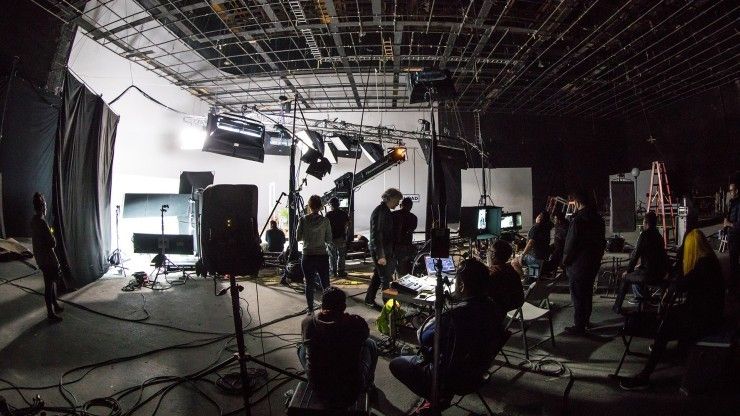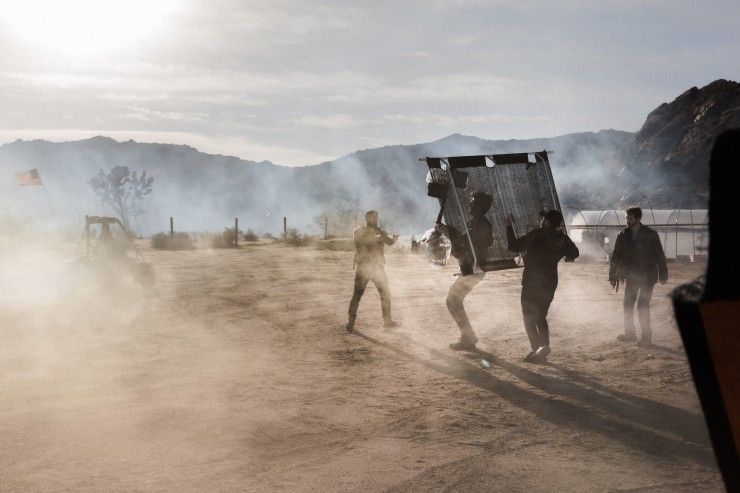
The IATSE Local 600 International Cinematographers Guild offers many benefits for those in the camera department. Here's everything you need to know.
The following material is an excerpt from the No Film School How to Make Money as a Cinematographer course.
If you work anywhere near the film industry, you have more than likely heard of IATSE, the International Alliance of Theatrical Stage Employees, and probably even know of a member. Of this alliance, the Local 600 ICG (International Cinematographer's Guild) represents Cinematographers and other members that make up the camera department.
This union is not only important for things like healthcare and retirement but is also a necessity if you want to work on bigger film projects and television shows.
Let's take a look at the history, what it takes for a Cinematographer to join, and why you need to.
IATSE Began 130 Years Ago
IATSE's beginnings trace back to 1893 when a group of stagehands from multiple cities met in New York to support fair wages and working conditions. The full name is International Alliance of Theatrical Stage Employees, Motion Picture Technicians, Artists, and Allied Crafts of North America (the United States and its territories and Canada). Now you see the need for abbreviating.

The membership includes those working in motion picture and television, broadcast television, live theater, trade shows and exhibitions, concerts, and construction shops and equipment, which covers those working in the above areas as part of the entertainment industry.
There are now 362 autonomous local unions with 501(c)5 non-profit statuses, and they are part of 13 districts across North America with over 150,000 IATSE members. The Cinematographers are part of IATSE Local 600 (ICG, or International Cinematographers Guild), which covers the camera department and publicists in the United States and Puerto Rico.
Why a Cinematographer Should Join The Local 600?
If you're a creative working as a Cinematographer and you're considering working on union productions, becoming a member of the IATSE Local 600 makes sense when you've hit a certain rung on your career ladder. At the very least, you will have unfettered access to working on union projects and receive employee protection that will add some much-needed stability to an already chaotic industry.

As a member of the International Cinematographers Guild, you'll also receive some pretty important benefits that you'd otherwise and more than likely be responsible for on your own: Health care and retirement.
Even if you're young, having something for when you retire is very important; you don't want to be 10 to 20 years away from retiring and have nothing put away. This is an issue that affects nearly everyone. Thankfully, the Local 600 has two employer-funded retirement programs, including a pension. As a member, you can work on different projects with different producers but receive the same health care and pension.

But an even bigger reason to consider joining the Local 600 is you'll be eligible to work on union productions, especially ones with even larger budgets. Producers have access to an extensive list of members to hire, and the union also has a mentorship program to help members to find those who can help them with career goals and networking. There are even training and special technical seminars about all the new technology coming out.
Other benefits include overtime pay; travel, housing, and per diem for filming on location; contract safety and health protections; and union and legal representation.
If you're planning on staying in the entertainment industry long term, especially in around Hollywood, joining the union is a must at a certain point in your career.
What Does it Take to Join the Local 600?
So, what are the steps needed to become a member of the IATSE Local 600? If you think it's as easy as signing up for an email address, you'd be incorrect. Creatives must first become eligible to join. This is done by working a specific number of days in the discipline of your choosing, which in the case of a cinematographer, will be the camera department.
But who in the camera department can join once they become eligible? The list includes:
- Director of Photography
- Camera Operators
- First or Second Assistants
- Video Controllers
- Film Loaders
- Still Photographers
- And other technical specialists (DITs, digital utility, etc.)
Where you work and live will also determine the process to apply, so check out this page for details. You'll then contact the regional office as a first step toward getting started.
Some of the requirements in the West Office (Hollywood), for example, include proving 30 days of union work within a one-year period (right after the date of application to the Industry Experience Roster) and 100 days of non-union work over a three-year period (right after the date of application to the IER). Make sure you read over everything and remember to reach out to the proper region based on where you live.
To simplify, you already need experience on set under your belt before contacting the union. This can be done by working on large non-union projects or finding contacts that will hire you for union gigs (even though you're not in the union). This can be done either as a favor or because the union roster is already empty. Sometimes, there are too many shows and not enough crew members.
While the one-time initiation fee isn't publicized, a quick search online says it could be at least $5,000, but it could also be higher. It also depends on what job classification you're applying for. There are also quarterly dues which are also dependent on job classification.
There are some things to consider, including the high cost to join as a cinematographer. Unless you're going to be working exclusively on bigger budget projects as a Director of Photography, the fees and dues could price you out of the market. You might want to consider a different job classification which has lower fees and dues until you can work your way up the ladder.
Check out this video by James Marin on how to join the Local 600:
When is the Right Time to Join?
That is a question that is ultimately up to the cinematographer. Many said they started working on non-union productions and were able to really make a name for themselves. Others have said assistants can join earlier as the demand is always higher. But the key rule is, joining the Local 600 was absolutely necessary to work on major union productions.
If you've been building a great reel, have an impeccable reputation, and have terrific contacts in the industry, you'll see demand for your services rise, especially in markets where major films, TV shows, and commercials are shooting. There will come a time when the major productions will reach out, and being a member of the Local 600 will become a necessity if those productions are guild signatories.
What Else Do Cinematographers Need To Know?
This union is only one small part of climbing the ranks of your career as a cinematographer. There is so much more to learn. How do you start and manage a client list? How can you buy new gear in a way that actually saves you money? What tools and techniques do you need to master for high-end productions? How about how to do your taxes?
To answer these questions, No Film School has created the How to Make Money as a Cinematographer course to teach you how to become a better creative. Not as a shooter but as a business.
This course is made up of 75 chapters, 8 hours of video lessons, and over 50 written resources, giving tried and true examples, techniques, and tools to start building your dream career. We're not only going to teach you to be a better creative on set but also give you the resources you need to start being a better business.
Start your new year by leveling up your video career—and your day rate. We're so excited to share How To Make Money As A Cinematographer with you and see your cinematography journey grow to new heights! Where will you be after taking this course? We can't wait to find out.

Your Comment
1 Comment
People love to talk about the benefits offered by the IATSE unions, but no one (outside the union) talks about how difficult it is to qualify for those benefits even after you join:
To quality for the (Cadillac) health plan, you need 600 qualifying hours in one year. That's about 10 weeks of standard 12-hour set days. Then 400 hours/year to maintain. Easy if you're regularly working on union shows. Not so easy if you work commercials or are more of a day player.
January 25, 2023 at 11:37AM